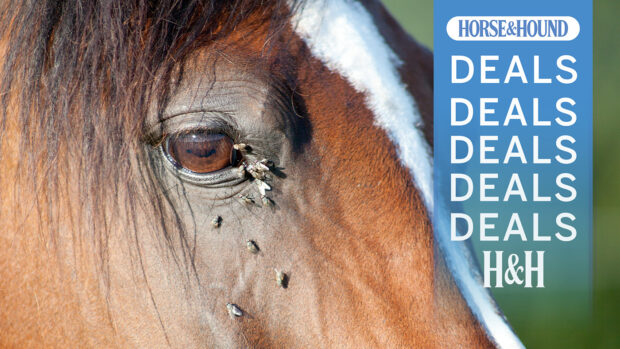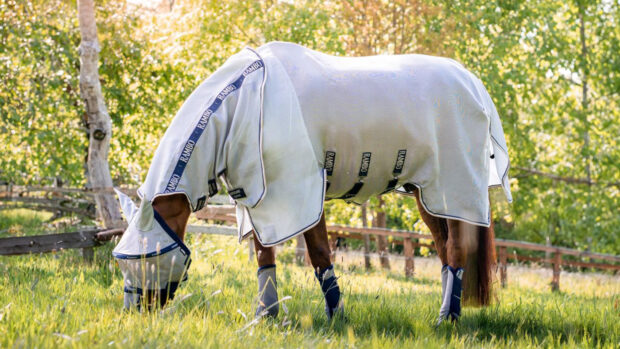Cinnamon. Vinegar. Lavender. Geranium. Diethylmetatoluamide. While some fly repellents seem to have come straight from Granny’s garden, others are undoubtedly fresh from the laboratory.
Contained within the array of sprays, creams, gels and wipes on the market are at least 12 different active ingredients, ranging from the most traditional natural solutions to powerful synthetic substances. So, confronted by rows of tubs, bottles and brightly-coloured labels, how does anyone know which one to choose?
The first decision is down to personal attitudes towards man-made chemicals.
“Some people will only use natural products on their horses, which is fine, but it doesn’t necessarily mean that they will have the most effective formulation,” says Kevin Perry of horsecare product company Net-Tex.
There is currently no legal requirement – beyond the advertising laws that apply to everything sold on the UK market – for manufacturers to prove the efficacy of active ingredients in equine insect repellents.
However, the regulations covering the use of synthetic chemicals mean that they have been subjected to extensive research and testing. On the other hand, many natural products are created on a small scale by companies that are little more than cottage industries and often do not have the resources for such studies.
As a result, considerably more is known about the exact properties of synthetic repellents and their value has been scientifically demonstrated.
Despite this, it is accepted that certain plants do have repellent qualities. Feeding garlic has long been recommended as a way of deterring flies, as has a sprig of elder in the horse’s browband. Extracts of lavender, cedar, rosemary, eucalyptus, cinnamon and tea tree are all used in bought preparations.
The right chemistry?
“The great thing about essential oils is that they’ve been around for thousands of years, so you have anecdotal evidence dating back centuries about what they’re good for,” says Merri Mayers, who is soon to add Comfort & Joy Equine to her human range of natural skin and cosmetic products.
“For me, it’s vital to take as natural an approach as possible with a horse (or a dog or cat) for one very good reason – whatever goes on them gets licked. Anything you apply to their skin gets inside them to a greater or lesser extent. Obviously ingestion of essential oils is a quite critical thing, but I’d rather have my horse take a little nibble at lavender essential oil on her coat than a synthetic chemical.”
Stephen Ashdown, resident vet for Global Herbs, is similarly wary. “Modern scientific chemicals can be incredibly strong,” he says. “Their side effects are known and have been assessed but are still there and still dangerous. It’s not as much of an issue with external application or in the quantities used in fly repellents, but these chemicals by their very nature can have harming effects. They can damage the liver, the immune system or the lining of the gut. They’re basically poisonous.”
DEET, widely used for human application in tropical areas to keep mosquitoes at bay, is the most common synthetic chemical in equine insect repellents.
“Theoretically, a solution containing 50% DEET could be irritating to the skin, but it would also be very effective, with a repellent action that might last for two or three days,” says Kevin Perry.
In reality, however, no product in the UK can contain more than 20% DEET without being licensed by the Veterinary Medical Directorate. Similarly, any formula containing powerful chemicals such as Permethrin would require a licence.
In the UK, where flies are more of a nuisance than a threat, producing repellents using such potent and tightly controlled drugs is rarely considered worthwhile.
“With a fly spray, bearing in mind the time, cost, research and paperwork to get a licence, most manufacturers are better off making formulas only up to the point where they don’t need one,” says Perry.
That threshold does vary depending on the combination of active ingredients, but many companies do not even get close to it. Some formulations on the market contain as little as 5% DEET, without other chemicals to complement it. Several brands of natural repellent also contain only small percentages of active ingredients – in some cases so low that they may be practically ineffective.
The future of fly repellents?
Global Herbs has recently launched the UK’s first specific fly-repelling feed supplement. FlyFree is based on a cedar extract, combined with other plant material, and formulated to pass from the bowels through the skin, giving a form of shield around the whole body.
“You can feed garlic and it’ll have the same effect, but this will be 10 times more effective,” says Stephen Ashdown.
In the UK, at least in the short-term, the variety of fly repellents on the market is likely to decrease rather than expand. A new EU directive means that any active ingredients in equine fly repellents must be presented to and tested by the Health & Safety Executive (HSE). Any that are not put forward or that do not meet the safety standards must be phased out by September 2006, and for some companies the costs involved in the process are prohibitive.
“In future, a company will have to pay to bring out a new repellent and if the turnover isn’t guaranteed, that won’t be economically viable,” says Phil Evans. “We’re looking at the volumes we’re selling and we will probably be discontinuing some lines. Others will be reformulated once we know which ingredients are going to be legal to use.”
It is possible that some manufacturers will be able to bend the guidelines by listing a product such as citronella as a fragrance rather than an active ingredient in their formulations.
“We can be fairly sure that there won’t be as wide a range available once the dust has settled,” says an HSE spokesman. “The qualification criteria are quite demanding, but because of the expense some quite effective and very safe products will inevitably disappear. It’s difficult to argue that the system is going to provide a better market for the consumer, although it will drive out any cowboys.”
|
||
 |
||


 Get up to 19 issues FREE
Get up to 19 issues FREE TO SUBSCRIBE
TO SUBSCRIBE 


